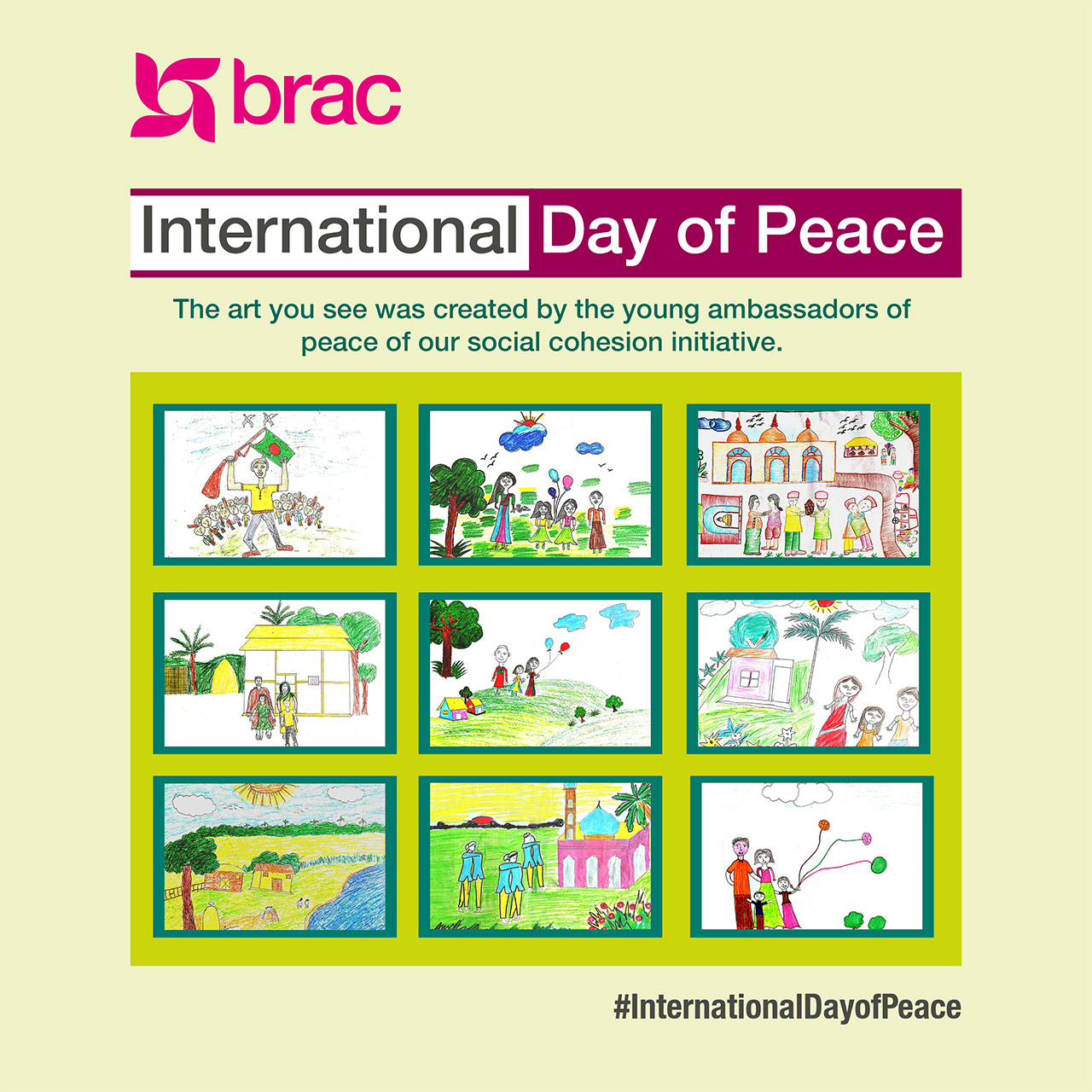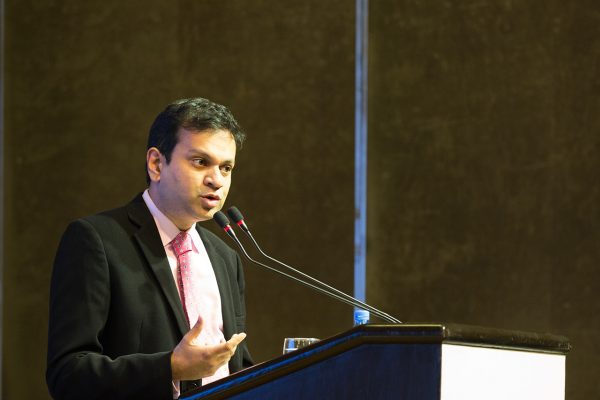People for peace: Lessons from Bangladesh
Reading Time: 4 minutes
This #InternationalDayofPeace, we explore the lessons we have learnt in Bangladesh from piloting social cohesion initiatives where everyone is an ambassador of peace.
“Life is good,” Karim* said, at first, as he drove his rickshaw under a sweltering midday sun in Manirampur of Jessore, southern Bangladesh. After a few minutes on the clear, narrow road, he revealed a rather different story when asked about whether he felt peaceful.
“My daughter’s husband left her because I could not afford to buy him a smartphone. I feel helpless.”
Karim* was also continually being sued by his relative over land disputes.
“I have spent all my income in the last five years on mitigating court cases. But nothing happens.”
Karim* had lost his trust in society – from feeling as if its institutions had failed him, to feeling like he had failed his family.
A group of students from Haluaghat in northern Bangladesh, express a different set of concerns when asked what prevents them from feeling peaceful – the insecurity and fear of not finding a job and being harassed. Students and teachers of madrasas felt discriminated against and left out of society.
“People are insecure and afraid,” shared Ayesha Begum, the leader of a polli somaj (women-led institution), who has been fighting to prevent violence against women and children for many years.
“This insecurity leads to many more terrible things practiced in our society, like child marriage. Parents marry their girls away mostly out of fear.”
A peaceful society depends on the stability of all these links. It starts at home and spreads across the fabric of society.
Sustainable development cannot be achieved without ensuring peace, human rights, stability and good governance.
BRAC has always taken a holistic approach to tackle the seemingly impossible challenges of inequity. Peace and equity is inherently intertwined with people’s awareness of and access to essentials – from financial services, healthcare and education, to legal rights and accountable institutions that support them.
Here are seven lessons we have learnt from the social cohesion initiatives led by BRAC’s community empowerment programme, where communities envision what peace means to them. We create awareness of their rights, engage them in preventing violence against women and children, and strengthen institutions to become accountable to the community.
1. Young people for peace – and inclusion
46.7 million Bangladeshis are young, making up about 30% of our entire population. Young people are our greatest strength in creating lasting change. The young women and men engaged in our activities – our key group of participants – became champions of peace in their communities. They are well aware of their strengths, and enthusiastic about bringing positive changes.
Millions of children and young people study in madrasas in Bangladesh. However, three out of four remain jobless. Both female and male madrasa students express feeling excluded and discriminated against. Most are not invited to participate in public events on national days, even though they want to get involved. They want to contribute to society based on their competencies, but struggle to find employment opportunities. Their involvement in the project allowed them to channel their enthusiasm and feel more connected to their own community.

We engaged young people through knowledge camps, where they participated in debate, performances and art. They channeled their creativity and critical thinking into shaping their understanding of what it takes to build a peaceful, cohesive society.
2. A powerful network of strong women
Almost 1 million women are members of our 12,800 polli somaj – democratic, women-led institutions across Bangladesh. Our project capitalised on this network of women leaders in three districts. Their years of experience in building support networks, claiming entitlements and preventing exploitation enabled them to be effective ambassadors of peace.
It became evident that women who were trained in leadership, peace and cohesion, and access to information were a positive influence on their surroundings. They rose in social status, and often became the first person contacted in their communities in case of a conflict – whether it be domestic violence, land disputes, or a child being forced into marriage.
3. A fair for all
Mela, the village fair, has been a longstanding tradition in Bangladesh. It has always been a crucial platform for social cohesion. Thousands of people attended the community fairs we organised where all forms of entertainment centred on messages on social issues such as gender equality, rights and harmony. Formal events proved essential for raising awareness on violent extremism and violence against women and children.

A community fair in Jashore, southern Bangladesh.
4. Families for peace
Every value we internalise is shaped by those closest to us – our family. So, we celebrated families who championed values such as gender equality. They became role models for their communities, often inspiring healthy, positive competition from other families. They were awarded the recognition of a ‘Happy family’, and resulted in people feeling more motivated to champion such values.
5. Religious leaders promote diversity and peace
Religious preachers play a strong role in shaping opinions and motivating people. We arranged peace talks where preachers and leaders of all religious communities assembled to discuss the importance of social cohesion and diversity.

Artwork inspired by a peace talk.
6. Accountability through public hearings
Public hearings were unique spaces for people to raise their voices. The needs of the community were voiced during their hearings. Participants were also able to voice their criticisms about public goods and service delivery. The space allowed for clear communication, holding institutions responsible and accountable to those they serve.
7. Formalising the promotion of peace
Local government must commit to promoting peace in order to sustain it – and their decisions are crucial for creating sustainable links between local communities and government agencies.
Allocating budget dedicated to activities for social cohesion is a step towards the formal adoption of promoting peace. A union council president committed 5% of the total union council budget after a public hearing where community members voiced their demand for it.
The lessons we learnt have been drawn from projects led by our community empowerment programme. Our latest initiative ‘Promoting peaceful society’ has engaged more than 50,000 people across 12 areas in three districts across Bangladesh. In partnership with Safer World, we are working in Cox’s Bazar with members of both the host and Rohingya community to mitigate conflict, counter violence against women and children and other forms of gender-based violence. Our project with UN Women also focused on developing women’s leadership to promote peace and cohesion, and their inclusion in economic activities.
Zaian F Chowdhury is the communications portfolio lead for learning, empowerment and innovation of BRAC Communications.





